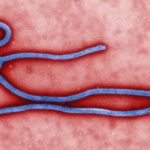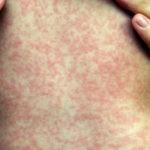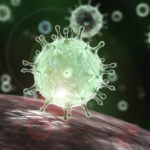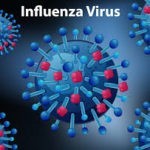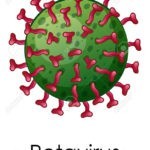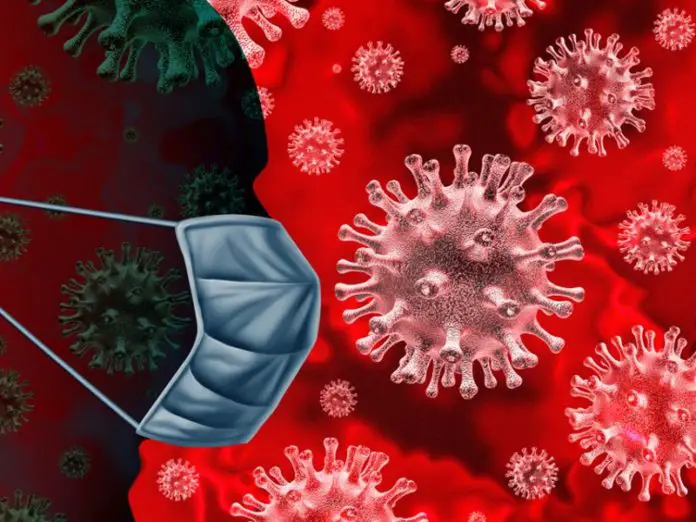
Three hundred twenty thousand different types of viruses can infect mammals alone. The deadliest of these viruses are responsible for killing 15 million people every year. They are ancient. They are highly lethal. And they can be found everywhere. They are killing millions of people every year! So far, there is no known form of life that viruses cannot infect! Let’s review the top 10 deadliest viruses the world has ever seen.
Here are the Top 10 Deadliest Viruses on Earth
-
Spanish Flu
The Spanish flu, also known as the 1918 flu pandemic, was an unusually deadly pandemic caused by the H1N1 influenza A virus. From February 1918 to April 1920, it infected 500 million people–about a third of the world’s population–in four successive waves. Wikipedia
Number of deaths: 50,000,000
Virus strain: Strains of A/H1N1
Suspected cases: 500 million (estimate)
Period: 1918 – 1920 -
Ebola
Ebola Virus Disease (EVD) is a rare and deadly disease in people and nonhuman primates. The viruses that cause EVD are located mainly in sub-Saharan Africa. People can get EVD through direct contact with an infected animal (bat or nonhuman primate) or a sick or dead person infected with the Ebola virus. If a virus can cause fear in the 21st century, it is the Ebola and Marburg viruses. Both these viruses have no effective treatment, no vaccine, and a fatality rate of up to 90%.
-
Measles
Measles has done a pretty good job of killing people throughout the ages. Over the last 150 years, the virus has been responsible for the deaths of around 200 million people. It has a yearly mortality rate of 197,000 deaths.
Measles symptoms appear 7 to 14 days after contact with the virus, typically including high fever, cough, runny nose, and watery eyes. The measles rash appears 3 to 5 days after the first symptoms.
-
Smallpox
Smallpox was an infectious disease caused by one of two virus variants, Variola major and Variola minor. In 1977, health authorities reported the last naturally occurring case of smallpox. In 1980, the World Health Organization declared the eradication of smallpox.
-
HIV & AIDS
Today, about 40 million people are living with HIV. Sadly, only around half of those infected have access to the required drugs needed for treatment, so the global death rate from AIDS is still shockingly high. Estimates suggest there are nearly 2 million deaths every year. Over the last 30 years, the virus has claimed over 25 million lives.
-
Coronavirus (COVID-19)
Coronavirus (COVID-19) is an infectious disease caused by a newly discovered coronavirus.
Most people infected with COVID-19 will experience mild to moderate respiratory illness and recover without special treatment. Older people and those with underlying medical problems like cardiovascular disease, diabetes, chronic respiratory disease, and cancer are more likely to develop serious illnesses.
According to WHO, as of 20 July 2020, there have been 14,538,094 confirmed cases of COVID-19, including 607,358 deaths.
-
Hepatitis B
 Hepatitis B is a viral infection that attacks the liver and can cause acute and chronic diseases. The virus is most commonly transmitted from mother to child during birth and delivery and through contact with blood or other body fluids. It causes the largest share of fatalities each year, with a death toll of around 700,000. Although the overall death rate from hepatitis C is lower than B, it still kills an estimated 350,000 people every year.
Hepatitis B is a viral infection that attacks the liver and can cause acute and chronic diseases. The virus is most commonly transmitted from mother to child during birth and delivery and through contact with blood or other body fluids. It causes the largest share of fatalities each year, with a death toll of around 700,000. Although the overall death rate from hepatitis C is lower than B, it still kills an estimated 350,000 people every year. -
Influenza
Influenza is a viral infection that attacks your respiratory system — nose, throat, and lungs. Influenza is commonly called the flu, but it’s not the same as stomach “flu” viruses that cause diarrhea and vomiting. For most people, influenza resolves on its own.
Everybody gets flu, which may not be nice for the majority, but it’s no big deal. However, influenza is responsible for up to 500,000 deaths yearly.
-
Rotavirus
Rotavirus is a genus of double-stranded RNA viruses in the family Reoviridae. Rotaviruses are the most common cause of diarrheal disease among infants and young children. Nearly every child in the world is infected with rotavirus at least once by age five.
Rotavirus, also known as the child killer, is a merciless virus that causes the deaths of more than half a million children every year. It is the leading cause of severe diarrheal illness among babies and young children.
-
Rabies
 Rabies is a deadly virus that spreads to people from the saliva of infected animals. Rabies has been one of humanity’s most feared diseases since ancient times. Infection with rabies occurs when bitten or scratched by an infected animal — most commonly, dogs or bats. Nearly 60,000 people die of rabies every year. Most of these deaths occur in Africa and southern Asia.
Rabies is a deadly virus that spreads to people from the saliva of infected animals. Rabies has been one of humanity’s most feared diseases since ancient times. Infection with rabies occurs when bitten or scratched by an infected animal — most commonly, dogs or bats. Nearly 60,000 people die of rabies every year. Most of these deaths occur in Africa and southern Asia.


